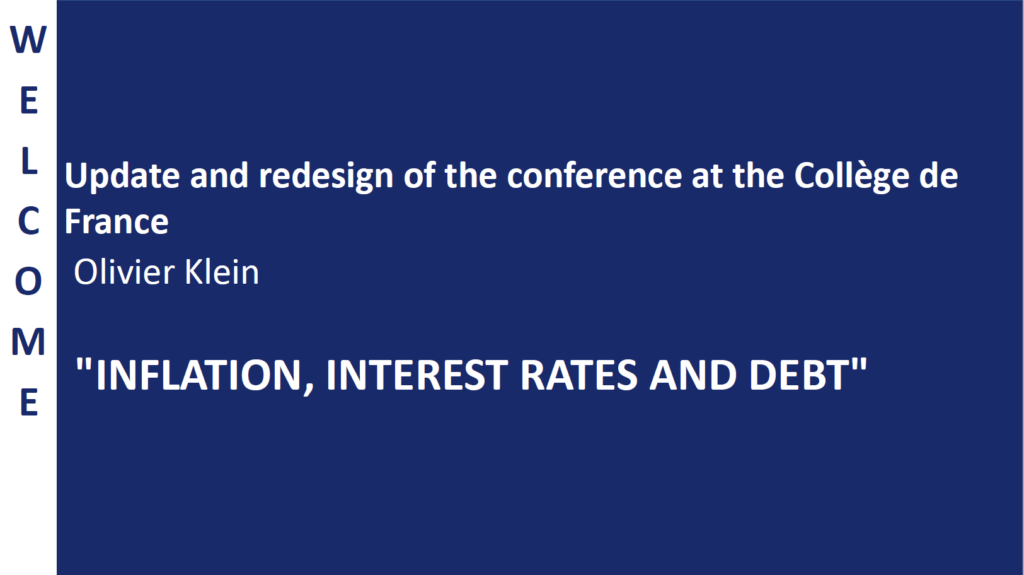L’Opinion, March 11, 2025
When a pure and simple balance of power prevails around you, to be heard and, better still, respected, you must be strong and united when you want to defend the values of the rule of law, multilateralism, international law, and the idea of economic and social regulation. Europe upholds these values, but currently has little capacity to enforce them. And yet, it has the potential.
Lagging behind
But Europe has significantly fallen behind the United States economically. From 2000 to 2024, the Eurozone experienced half the growth rate of the United States, averaging around 1% annually compared to 2% across the Atlantic. With productivity gains of 0.7% per year compared to 2%. These gaps have widened further since 2019. China dominates global production of solar panels (84% of market share) and wind turbines (55%).
Europe also has a very limited presence in other future industries (electric batteries, semiconductors, data industries, etc.). Due to a lack of investment in new technologies and a deficiency in productivity gains, Europe has not given itself the means to achieve economic power.
Despite the laudable nature of its intentions, Europe has adopted a highly normative and often insufficiently realistic approach, to the detriment of its economy and competitiveness. It manufactures at high cost and has become obsessed with creating all kinds of meticulous standards. Moreover, regulations are often disparate among the different members of the European Union, which is also a significant obstacle to economic growth.
Hyperpowers
However, the lack of balance between ethics and efficiency cannot sustainably uphold the stated ethical principles, due to the lack of a dynamic and sufficiently competitive economy. And so, Europe, as it has operated in recent years, has focused on appearing righteous. But far from this essential balance, it is ultimately often viewed as a hindrance. With its complex and insufficiently effective governance, it is seen as having great difficulty to assert itself in the face of the rise of Chinese and American hyperpowers.
But even if Europe, among developed countries, does not have exclusivity in this regard, many countries on the continent are weakened by the growing distrust in their populations’ ability to live together, as well as in institutions and democracy itself. We in Europe must not shy away from carefully analysing the reasons for this loss of confidence. At stake are the detrimental effects of ignoring popular (and not populist per se) demand for public authority, security and better regulation and integration of immigration.
In some European countries, it is also important to carefully assess the disempowering and distrust-inducing effects of excessive administration. This also includes the negative effects, both socially and economically, of public overspending and compulsory contributions, overregulation, the serious excesses of the rise of individual rights in the face of weakening obligations, and hardline egalitarian tendencies.
Whilst populist movements are growing significantly, including in France, Germany, Austria, and the Netherlands, for example, it is not enough to simply criticise them. Only a fair and urgent awareness and appropriate responses from governing parties can prevent the advent of a brutal, populist backlash.
Causalities
Let’s not reverse the causalities; populism is the symptom and consequence of a disaffection with democracy and institutions, much more than its cause. European credibility will then only be stronger, both within Europe itself and vis-à-vis the United States or the “Global South,” and its criticism less easy.
The decline is not inexorable if Europe and its constituent countries are still capable of a strong multidimensional resurgence, of an essential impetus.
These two combined phenomena—economic decline and rising distrust of institutions—could lead to the “slow death” (cf. Mario Draghi) of our old continent, assailed by doubt. An existential question, if ever there was one. Civilisations, even the most magnificent ones like ours, can end up slowly fading away. But this decline is not inevitable if Europe and its constituent countries are still capable of a strong multidimensional resurgence, an essential impetus.
By pooling many of our strengths and seeking greater unity, in the diplomatic and military spheres. But also in the economic and industrial spheres, through greater integration, the ability to create European champions, and a drastic reduction in our internal regulatory barriers.
Governance
And this will only be possible by significantly improving the governance of the European Union. Ultimately, by rediscovering the right balance between the necessary regulation of market forces versus the buoyancy of the economy, and social environmental protection versus efficiency, rules versus freedom, tradition versus modernity, respect for the individual versus that of society… Without these balances, our model could disappear in a moral bankruptcy with a financial bankruptcy in tow.
A European scale is the only way possible, given the dominance of the American and Chinese superpowers. Europe can and must react vigorously and not allow our model, our way of life, and our economic, social, and value system to disintegrate. The challenge is to ensure a future for our European civilisation.
By not allowing Europe to slip out of history through an inexorable weakening. By not allowing the rise of authoritarian and brutal regimes, more indifferent to the rule of law, in this very country. By making Europe’s voice heard in the concert hall of great powers. To conclude, let us quote Cioran: “A civilisation begins with myth and ends with doubt.”
We can still muster the resources and strength to resist doubt. Three minimum conditions are essential for this: first, lucidity in analysing our weaknesses as well as our strengths. Second, the essential sense of urgency. And finally, the courage to regain the governance and balance essential to our vitality.
Olivier Klein is a professor of Economics at HEC and Managing Director of Lazard Frères Banque.



